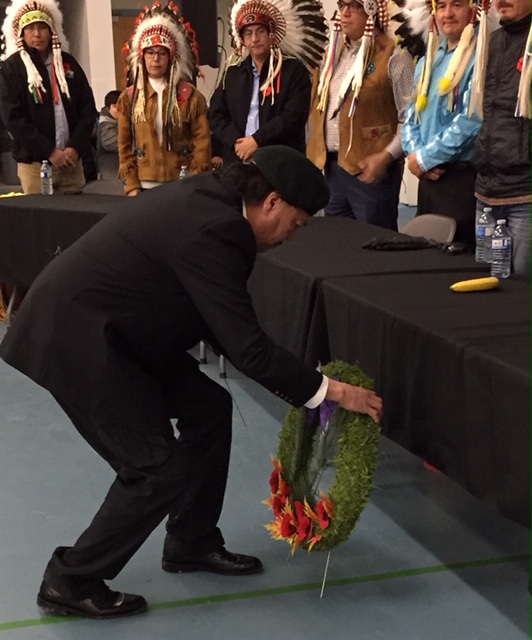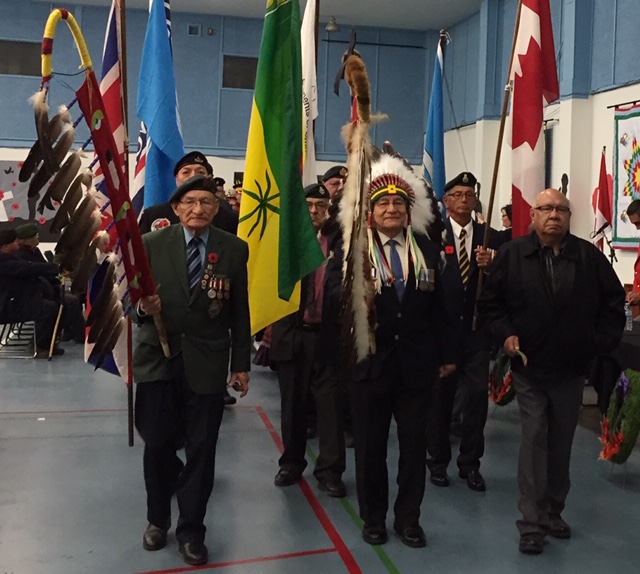About 200 people took part in the Prince Albert Grand Council’s Remembrance Day ceremony Friday morning.
Master of ceremonies Lyndon Linklater says even though First Nations people were not required to sign up for service during both World Wars, many did so anyway.
“When World War One broke out, when World War Two broke out, through the treaty we had a treaty right that exempted us from being conscripted,” he says. “But regardless, what ended up happening is our First Nations, men and women, they waived that right and they volunteered and they joined anyways.”

Linklater says one of the reasons First Nations people of all ages continue to actively participate in Remembrance Day ceremonies is to show non-Indigenous Canadians the tremendous contribution they have made to the nation’s armed forces.
“For many of the people who came today, so many of them know people who were in the service, who fought in these wars. So, for Indigenous people, it wasn’t that long ago that many Canadians did not know the contributions we had made to World War One, World War Two, you know, and the Korean War.”
Although many First Nations people participated in both World Wars, they did not receive the same benefits as non-Indigenous veterans such as subsidized housing and education.
Linklater says today Indigenous people continue to take an active part in the Canadian Armed Forces taking part in the conflict in Afghanistan and various peacekeeping missions.
Young First Nations people are also recruited into the forces through the Bold Eagle program.
The PAGC Remembrance Day event was held at the Senator Allen Bird Memorial Centre in Prince Albert.
(PHOTOS: Top, the closing ceremony parade at the PAGC Remembrance Day event. Bottom, veteran Rod Paintednose of One Arrow First Nation places a ceremonial wreath. Photos by Fraser Needham.)
